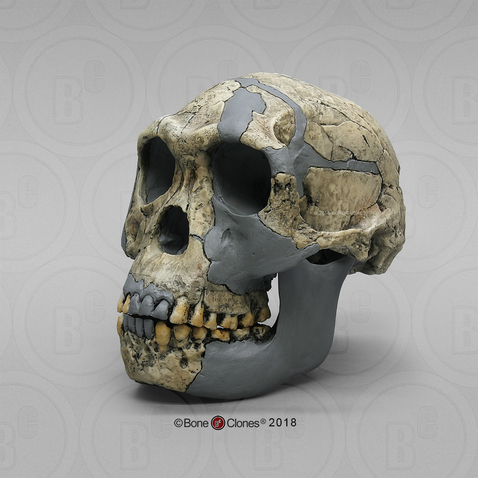-
Fields of Study
- K-12 Education
- Advanced Anatomy
- Forensics
- Physical Therapy
- Primate Locomotion
- Non-primate Locomotion
- Biological Anthropology
- Paleontology
- Bioarchaeology
- Marine-Aquarium
- Veterinary
-
Zoology
- All Zoological Items
- Endangered Species
- Skulls
- Skeletons
- Cranial Elements
- Postcranial Elements
- Eggs
- Limbs
- Teeth & Fangs
- Claws & Talons
- Brains & Endocasts
- Life Casts
- Pathology & Trauma
- Wildlife Forensics
- Sets
- Bird Sets
- Accessories
- Birds
- Mammals
- Reptiles & Amphibians
- Fish
- Sharks & Rays
- Turtles & Tortoises
- Anatomy for the Artist
- Decor
- Veterinary
- Elements
- Pathology & Trauma
-
Sets & Series
- Natural History Gift Ideas
- Decor
- Scale & Sculpture
- 3D Scanned & Printed
- Bone Boxes
- Locomotion Sets
- Forensic Sets
- Advanced Anatomy Sets
- Physical Therapy Series
- Fetal Sets
- Economy Series
- Zoology Sets
- Bird Sets
- Claw & Talon Sets
- Tooth & Fang Sets
- Primate Skull Sets
- Fossil Hominid Sets
- B.I.O.P.S.I. - Babiarz Institute
- Maxwell Collection
- Bergdorf Goodman Windows
- Accessories
- New Products
-
Our Company
- News & Specials
- Printable Handouts
- About Us
- Why Choose Bone Clones
- Bone Clones in the News
- Mission
- Contact Us
- Privacy and Security
- FAQs
- Testimonials
- Community Outreach
- Legal/Copyright
- Flyers
- Choosing Original Specimens
- Museum Exhibitions
- Natural History Gift Ideas
- About the Economy Series
- Acknowledgements
- Ordering & Delivery
- Warranty
- Refund/Return Policy
- Price List at a Glance
- Our Catalog
- Osteological Evaluation Reports
- About 3D Printing
- Sawyer & Maley Neanderthal Reconstruction
- Site Introduction
- Newsletter Archive
-
Human Anatomy
- All Human Anatomy
- Human Skulls
- Human Skeletons
- Head & Neck
- Postcranial Elements
- Advanced Anatomy
- Physical Therapy / Joints
- Human Brains & Endocast
- Human Life Casts
- Maxwell Museum
- Sets & Series
- Accessories
- Osteological Evaluation Reports
- Featured
- Adult Human Anatomy
- Adolescent Human Anatomy
- Child Human Anatomy
- Fetal Human Anatomy
-
Zoology
- All Zoological Items
- Endangered Species
- Skulls
- Skeletons
- Cranial Elements
- Postcranial Elements
- Eggs
- Limbs
- Teeth & Fangs
- Claws & Talons
- Brains & Endocasts
- Life Casts
- Pathology & Trauma
- Wildlife Forensics
- Sets
- Bird Sets
- Accessories
- Birds
- Mammals
- Reptiles & Amphibians
- Fish
- Sharks & Rays
- Turtles & Tortoises
- Fossil Hominids
- Paleontology
- Non-human Primates
- Forensics
All items sold on this website are replicas; no real/natural bone is available on this site. Bone Clones® are 1:1 scale unless stated otherwise. All Bone Clones® products are made in the USA.
- Homo habilis ,
- Fossil Hominid ,
- Recreation ,
- KNM-ER ,
- Sawyer
 ALSO SEE:
ALSO SEE:
Homo habilis Skull KNM-ER 1813 Sawyer-Deak Reconstruction
BH-034 $439.00
1.9 MYA. The Homo habilis skull KNM-ER 1813 was discovered by K. Kimeu in 1973 at Koobi Fora, Kenya, and described by R. Leakey in Nature in 1973. There is still controversy about this specimen's classification, with some scientists opting to classify it as an australopithecine and others believing it is a species of Homo. Some paleoanthropologists have raised the possibility that KNM-ER 1813 is the female counterpart to the Homo rudolfensis KNM-ER 1470. While dated to the same time period and sharing some characteristics, KNM-ER 1813 has a much smaller face, brain and teeth than 1470. Other paleoanthropologists argue that its brain size of 510 cc (in contrast to 1470's 750 cc) indicates a size difference too great to be due to sexual dimorphism and represents a separate species. Another view is that the differences among the various early Homo crania, including ER 1813 and ER1470, fall within the range of variation of a single species. It's also not the case that this specimen is simply an immature version of H. rudolfensis, as the third molar appears to have been worn down. Instead, it has been suggested that it belongs in a category of Homo habilis, with which it shares similarities in tooth size and shape, cranium size, and face shape.
Exclusively licensed for production to Bone Clones, this composite reconstruction was done by anthropologists G. J. Sawyer and Viktor Deak as part of their research in the production of their book, The Last Human: A Guide to 22 Species of Extinct Humans. Using a reproduction of the cranium of KNM-ER 1813 as a basis for the reconstruction, modifications were made to realign distorted areas of the vault and face. Missing areas to the face, base and vault of the skull were replaced by transplanting selected parts from other individual fossils including OH-13, 24, STS-19, considered to belong to the same genus. Certain areas not available in any fossils were sculpturally restored.
The Bone Clones® Fossil Hominid line is composed of discoveries from anatomically modern humans, archaic humans, early Homo, early hominins, and other hominids. The majority of the casts in this line have been recreated by our team of anatomical sculptors. Some are reconstructions made by anthropology professionals using fragmentary elements from original discoveries and extrapolating the missing parts from those (i.e. Neanderthal skeleton). A small portion of the fossil hominid line has been cast from original material.
2-part skull (separate cranium & jaw).
Custom display stand available below.
Jaw available individually as well, please inquire.
| Scientific Name | Catalogue # | Size | Price |
| Homo habilis | BH-034 | 6" L x 5" W x 6" H 15.8L x 12.8W x 14.7H (cm) | $439.00 |
Related Products:
-
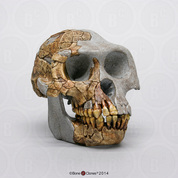 Ardipithecus ramidus Skull
Ardipithecus ramidus Skull -
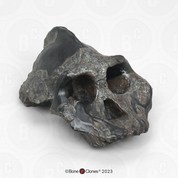 Australopithecus aethiopicus Cranium KNM-WT 17000
Australopithecus aethiopicus Cranium KNM-WT 17000 -
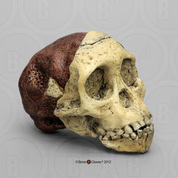 Australopithecus africanus Skull (Taung Child)
Australopithecus africanus Skull (Taung Child) -
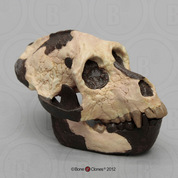 Aegyptopithecus zeuxis Skull
Aegyptopithecus zeuxis Skull -
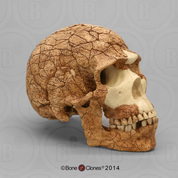 Homo sapiens Skull Skhul 5
Homo sapiens Skull Skhul 5 -
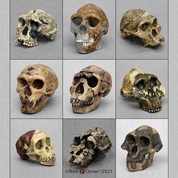 Set of 9 Fossil Hominid Skulls
Set of 9 Fossil Hominid Skulls -
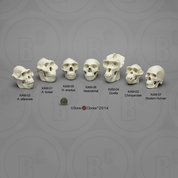 Set of 7 Primate Skulls, Half Scale
Set of 7 Primate Skulls, Half Scale -
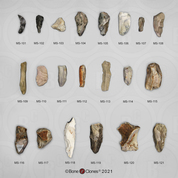 Set of 21 Neanderthal Tools
Set of 21 Neanderthal Tools -
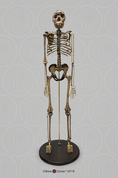 Homo ergaster KNM-WT 15000 Skeleton, Articulated
Homo ergaster KNM-WT 15000 Skeleton, Articulated -
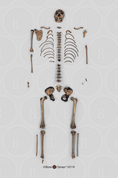 Homo ergaster KNM-WT 15000 Skeleton, Disarticulated
Homo ergaster KNM-WT 15000 Skeleton, Disarticulated -
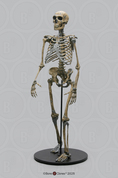 Neanderthal Skeleton, Articulated
Neanderthal Skeleton, Articulated -
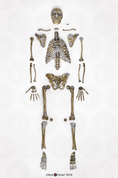 Neanderthal Skeleton, Disarticulated
Neanderthal Skeleton, Disarticulated -
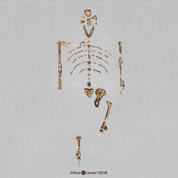 "Lucy" Skeleton, Disarticulated
"Lucy" Skeleton, Disarticulated -
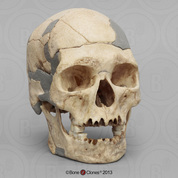 H. sapiens Oase Skull With Reconstruction
H. sapiens Oase Skull With Reconstruction -
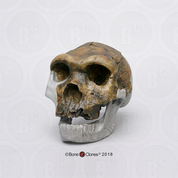 Homo heidelbergensis "Bodo" Skull
Homo heidelbergensis "Bodo" Skull
Newsletter Signup
9200 Eton Ave.
Chatsworth, CA 91311 USA
© 1992-2025 Bone Clones Holdings. All Rights Reserved.
Customer Service
© 2025 BONE CLONES HOLDINGS / Made by MEV




